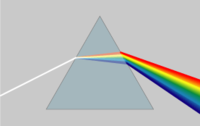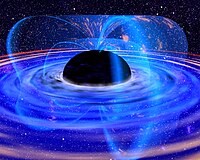
On the primordial specific frequency of globular clusters in dwarf and giant elliptical galaxies
Sign Up to like & getrecommendations! Published in 2019 at "Astrophysics and Space Science"
DOI: 10.1007/s10509-019-3571-7
Abstract: Globular clusters (GC) are important objects for tracing the early evolution of a galaxy. We study the relation between the properties of globular cluster systems—as quantified by the GC specific frequency (SN$S_{N}$)—and the properties of… read more here.
Keywords: frequency; mass; relation; specific frequency ... See more keywords

Gradients of Metallicity and Age of Stars in the Dwarf Spheroidal Galaxies KKs 3 and ESO 269-66
Sign Up to like & getrecommendations! Published in 2018 at "Astrophysics"
DOI: 10.1007/s10511-018-9548-3
Abstract: We compare the properties of the stellar populations of the globular clusters and field stars in two dwarf spheroidal galaxies (dSphs): ESO 269-66, a near neighbor of the giant S0 galaxy NGC 5128, and KKs… read more here.
Keywords: eso 269; dwarf spheroidal; age; kks eso ... See more keywords

Sustained formation of progenitor globular clusters in a giant elliptical galaxy
Sign Up to like & getrecommendations! Published in 2019 at "Nature Astronomy"
DOI: 10.1038/s41550-019-0909-6
Abstract: Globular clusters (GCs) are thought to be ancient relics from the early formative phase of galaxies, although their physical origin remains uncertain 1 , 2 . GCs are most numerous around massive elliptical galaxies, where… read more here.
Keywords: star clusters; elliptical galaxy; giant elliptical; globular clusters ... See more keywords

A plague of magnetic spots among the hot stars of globular clusters
Sign Up to like & getrecommendations! Published in 2020 at "Nature Astronomy"
DOI: 10.1038/s41550-020-1113-4
Abstract: For more than six decades, the quest to understand the formation of hot (about 20,000−30,000 K) extreme horizontal branch (EHB) stars in Galactic globular clusters has remained one of the most elusive in stellar evolutionary theory.… read more here.
Keywords: hot stars; magnetic spots; ehb; ehb stars ... See more keywords

mocca-survey Database I: Binary black hole mergers from globular clusters with intermediate mass black holes
Sign Up to like & getrecommendations! Published in 2020 at "Monthly Notices of the Royal Astronomical Society"
DOI: 10.1093/mnras/staa2677
Abstract: The dynamical formation of black hole binaries in globular clusters that merge due to gravitational waves occurs more frequently in higher stellar density. Meanwhile, the probability to form intermediate mass black holes (IMBHs) also increases… read more here.
Keywords: black holes; black hole; binary black; mass ... See more keywords

The effects of dwarf galaxies on the orbital evolution of galactic globular clusters
Sign Up to like & getrecommendations! Published in 2020 at "Monthly Notices of the Royal Astronomical Society"
DOI: 10.1093/mnras/staa2773
Abstract: We investigate the effect that dwarf galaxies have on the orbits, tidal histories, and assumed formation environment of Milky Way globular clusters. We determine the orbits of the Milky Way's 150 globular clusters in a… read more here.
Keywords: orbital evolution; effects dwarf; galaxies orbital; globular clusters ... See more keywords

The chemical compositions of accreted and in situ galactic globular clusters according to SDSS/APOGEE
Sign Up to like & getrecommendations! Published in 2020 at "Monthly Notices of the Royal Astronomical Society"
DOI: 10.1093/mnras/staa478
Abstract: Studies of the kinematics and chemical compositions of Galactic globular clusters (GCs) enable the reconstruction of the history of star formation, chemical evolution, and mass assembly of the Galaxy. Using the latest data release (DR16)… read more here.
Keywords: accreted situ; sdss apogee; chemical compositions; globular clusters ... See more keywords

The Milky Way’s stellar streams and globular clusters do not align in a Vast Polar Structure
Sign Up to like & getrecommendations! Published in 2020 at "Monthly Notices of the Royal Astronomical Society"
DOI: 10.1093/mnras/staa710
Abstract: There is increasing evidence that a substantial fraction of Milky Way satellite galaxies align in a rotationally-supported plane of satellites, a rare configuration in cosmological simulations of galaxy formation. It has been suggested that other… read more here.
Keywords: stellar streams; milky way; vast polar; polar structure ... See more keywords

Gaia EDR3 view on galactic globular clusters
Sign Up to like & getrecommendations! Published in 2021 at "Monthly Notices of the Royal Astronomical Society"
DOI: 10.1093/mnras/stab1475
Abstract: We use the data from Gaia Early Data Release 3 (EDR3) to study the kinematic properties of Milky Way globular clusters. We measure the mean parallaxes and proper motions (PM) for 170 clusters, determine the PM… read more here.
Keywords: edr3 view; galactic globular; view galactic; globular clusters ... See more keywords

Second generation star formation in globular clusters of different masses
Sign Up to like & getrecommendations! Published in 2021 at "Monthly Notices of the Royal Astronomical Society"
DOI: 10.1093/mnras/stab3682
Abstract: By means of three-dimensional hydrodynamical simulations, we investigate the formation of second generation (SG) stars in young globular clusters of different masses. We consider clusters with a first generation of asymptotic giant branch (AGB) stars… read more here.
Keywords: cluster; second generation; clusters different; different masses ... See more keywords

Mass-loss from massive globular clusters in tidal fields
Sign Up to like & getrecommendations! Published in 2021 at "Monthly Notices of the Royal Astronomical Society"
DOI: 10.1093/mnras/stab649
Abstract: Massive globular clusters lose stars via internal and external processes. Internal processes include mainly two-body relaxation, while external processes include interactions with the Galactic tidal field. We perform a suite of N-body simulations of such… read more here.
Keywords: mass loss; loss massive; body; massive globular ... See more keywords